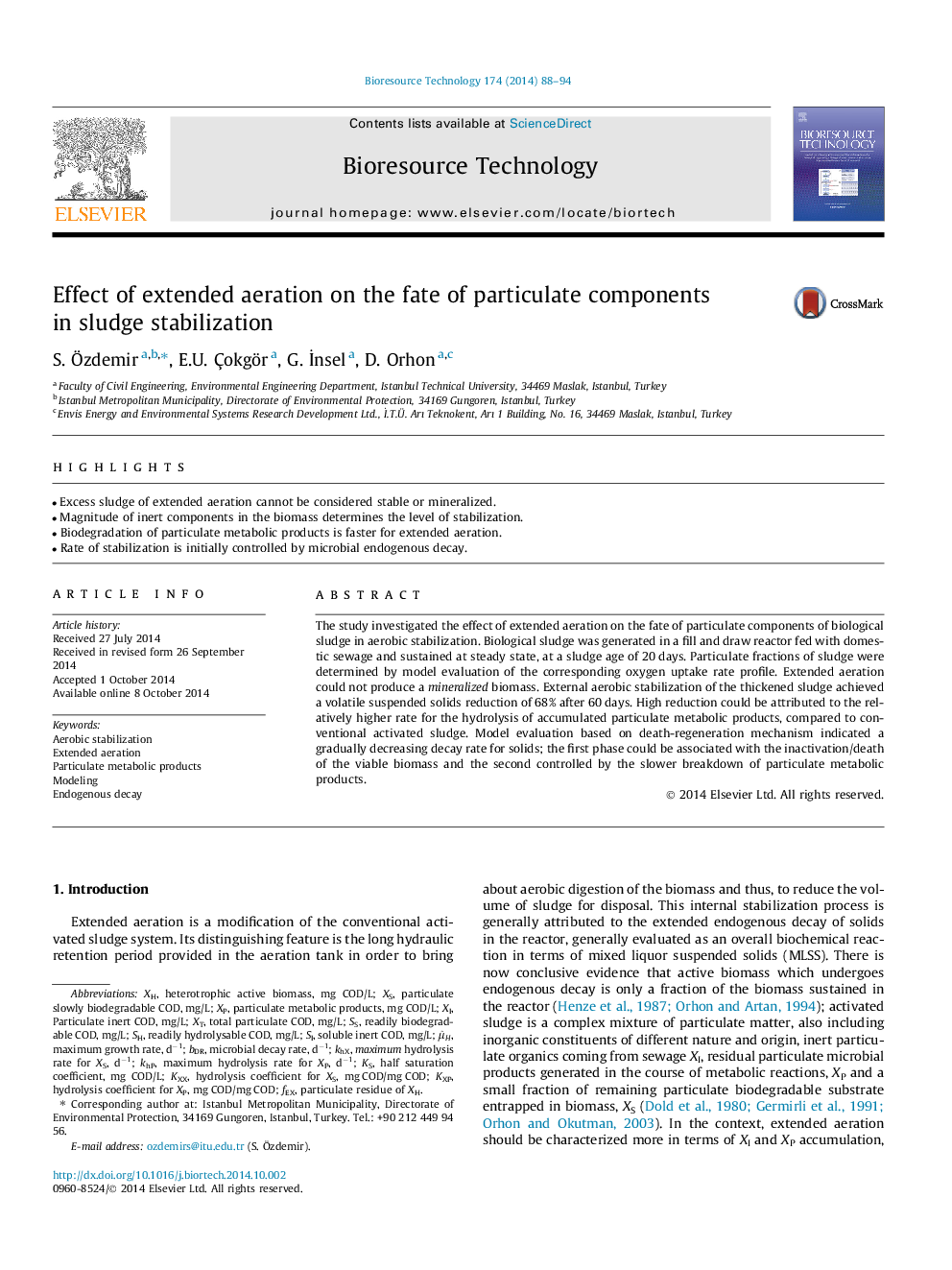| Article ID | Journal | Published Year | Pages | File Type |
|---|---|---|---|---|
| 7075753 | Bioresource Technology | 2014 | 7 Pages |
Abstract
The study investigated the effect of extended aeration on the fate of particulate components of biological sludge in aerobic stabilization. Biological sludge was generated in a fill and draw reactor fed with domestic sewage and sustained at steady state, at a sludge age of 20Â days. Particulate fractions of sludge were determined by model evaluation of the corresponding oxygen uptake rate profile. Extended aeration could not produce a mineralized biomass. External aerobic stabilization of the thickened sludge achieved a volatile suspended solids reduction of 68% after 60Â days. High reduction could be attributed to the relatively higher rate for the hydrolysis of accumulated particulate metabolic products, compared to conventional activated sludge. Model evaluation based on death-regeneration mechanism indicated a gradually decreasing decay rate for solids; the first phase could be associated with the inactivation/death of the viable biomass and the second controlled by the slower breakdown of particulate metabolic products.
Related Topics
Physical Sciences and Engineering
Chemical Engineering
Process Chemistry and Technology
Authors
S. Ãzdemir, E.U. Ãokgör, G. Ä°nsel, D. Orhon,
